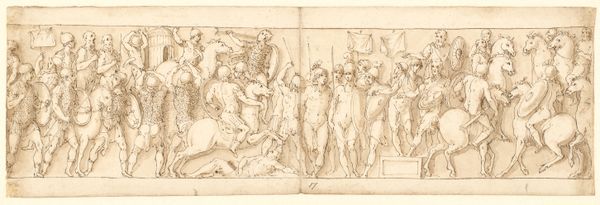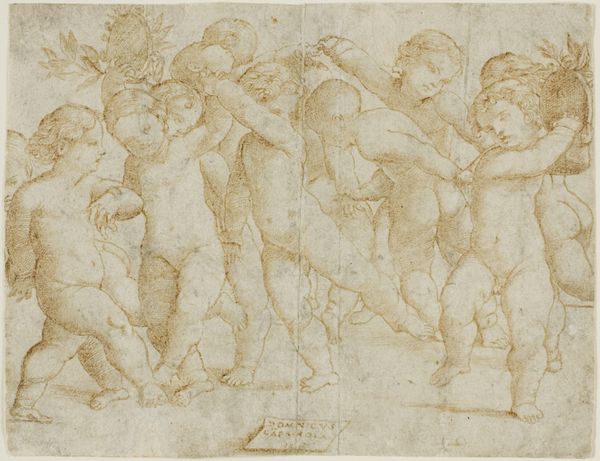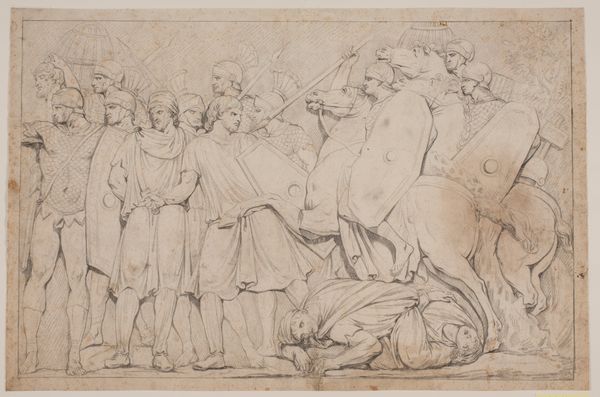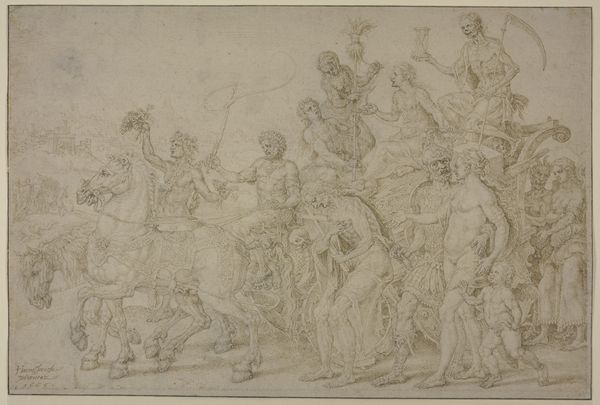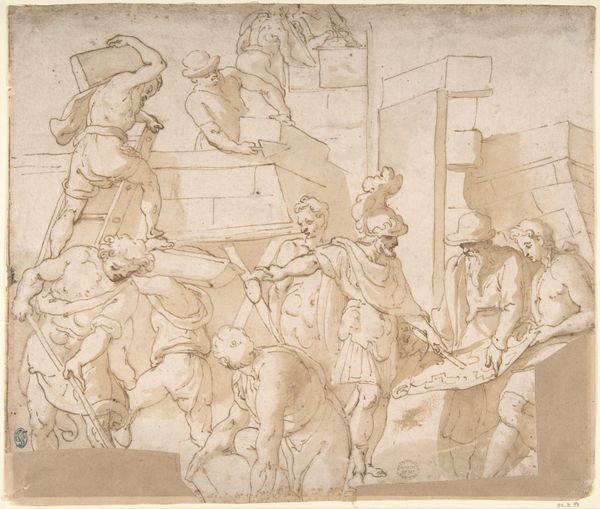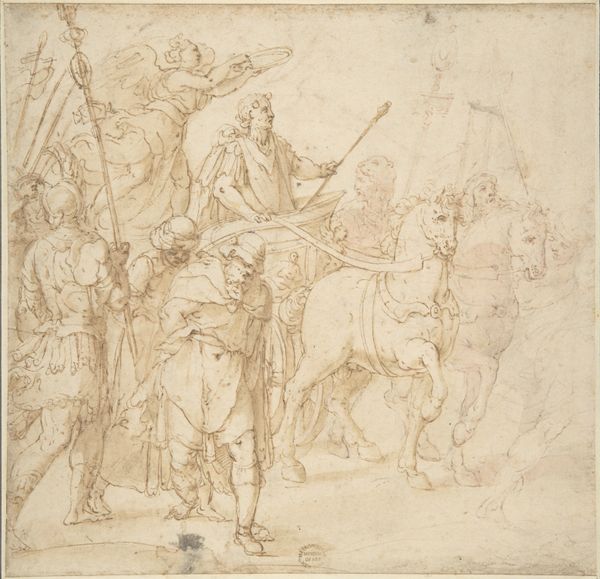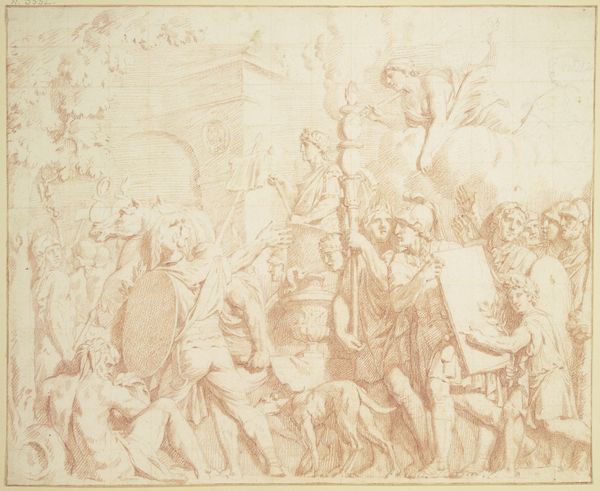
Roman cavalry (LXV); a severed head (interpreted as a prisoner by Guerra) and a German prisoner are brought before the emperor (LXVI); Romans advancing (LXVII) 1544 - 1618
0:00
0:00
drawing, paper, ink
#
drawing
#
narrative-art
#
figuration
#
paper
#
11_renaissance
#
ink
#
history-painting
#
academic-art
Dimensions: 133 mm (height) x 432 mm (width) (bladmaal)
Giovanni Guerra created this pen and brown ink drawing of Roman cavalry and prisoners in the late 16th or early 17th century. Guerra was a highly sought-after designer of large-scale fresco decorations in Rome, and this drawing gives us insight into the ways early modern artists drew on the visual codes of the past. The subject matter recalls ancient Roman triumphal reliefs, which served a very clear political purpose. These reliefs visually asserted the power of the Roman empire. They were propaganda, meant to awe viewers with the might of Rome’s military. Here, Guerra revives this tradition, likely with the patronage of a noble Roman family keen to associate themselves with the glory of antiquity. As historians, we look to sources like emblem books, costume books, and architectural treatises to understand how artists in the early modern period mined the past for present purposes. This drawing reminds us that art doesn't exist in a vacuum; it is always embedded in social and institutional contexts.
Comments
No comments
Be the first to comment and join the conversation on the ultimate creative platform.


